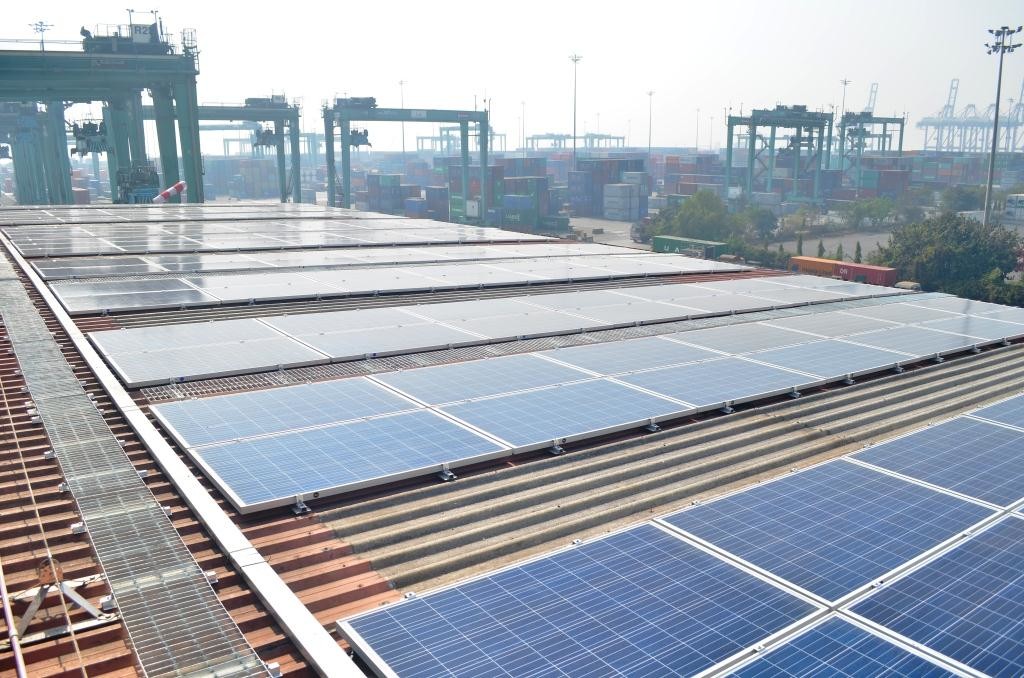APM Terminals Senior Vice President Peder Sondergaard on Monday officially inaugurated a new solar power initiative at APM Terminals Mumbai, the busiest container terminal at Jawaharlal Nehru Port (JNP), at the Port of Mumbai, serving India’s commercial and financial hub.
As part of the clean solar energy project, solar panels have been installed on the roofs of two terminal structures, and the conversion of energy from collected sunlight into stored electricity has commenced.
The system became fully operational on January 1st, 2016, with a power generation potential of 361,000 kWh (kilowatt hour) units per year.
“APM Terminals and the APM Terminals Global Terminal Network are always looking for opportunities to improve services and enhance environmentally sustainable business operations; the Mumbai Solar Panel Project reaffirms our commitment to green power and caring for the Indian environment”, said APM Terminals Mumbai COO, Ravi Gaitonde.
A feasibility study was completed by the terminal in 2015 on the possibility of generating solar power to reduce conventional electrical power consumption at the facility, which handled approximately two million TEUs in 2015, representing over 40% of the record-breaking 4.48 million TEUs handled by the Mumbai port complex in 2015. The resulting Solar Panel Installation Project to capture and store energy from the sun for use as electrical power for terminal operations will be undertaken in three phases.
Phase I of the Solar Power Project, now underway, included the installation and implementation of solar panels on the roofs of the terminal’s workshop and Central Gate Complex. Phase II will see the installation of solar panels on the roof tops of the STS (ship-to-shore) crane machine houses, with the expected completion date of June 2016, following trial testing. These new panels will generate an additional 220,000 kWh (kilowatt hour) units per year.
Phase III of the project is currently in the conceptual stage, and will call for panels covering a wider surface area, resulting in solar generation of approximately 15% of the terminal’s total annual power requirement, approximately five million kWh (kilowatt hour) units per year.
India, with a population of 1.2 billion, is the world’s fourth-largest producer of electricity, following China, the USA, and Russia, and the fifth-largest consumer of electricity, after China, the USA, Russia and Japan. Approximately 70% of India’s electrical power is generated by burning fossil fuels. Accessibility to clean, carbon-free, renewable energy sources will become increasingly important for ongoing economic growth as India’s population expands by an estimated 200 million (the approximate size of the current population Brazil) over the next 15 years.
Copyright Ships & Ports Ltd. Permission to use quotations from this article is granted subject to appropriate credit given to www.shipsandports.com.ng as the source.

